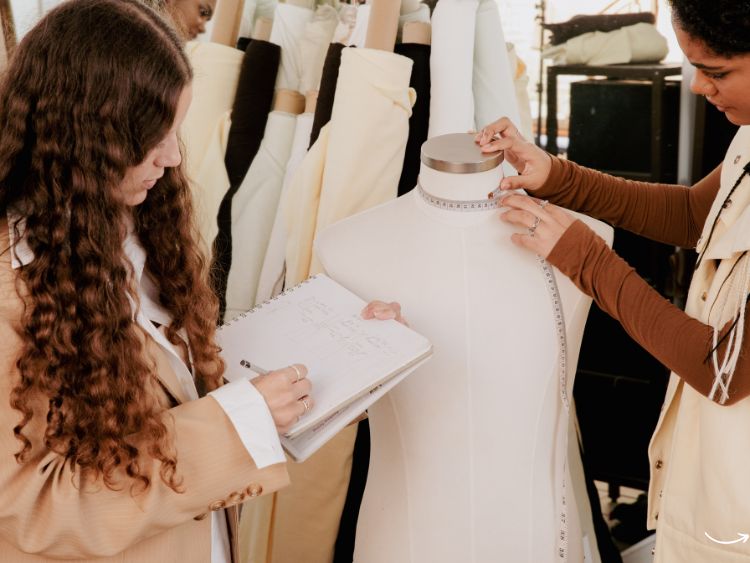Breaking into the fashion industry can feel like a catwalk challenge. Your fashion design resume is the first impression you make on potential employers, and let’s face it, in this fast-paced, ever-evolving world, it needs to be nothing short of fabulous. Whether you’re a fresh graduate stepping into the industry or a seasoned designer aiming for that next big opportunity, creating a standout resume is crucial. So, how do you make your resume as stylish as your designs? Let’s dive into the essential elements and strategies for crafting a winning fashion design resume.
Understanding the Basics
What Is a Fashion Design Resume?
A fashion design resume is a document that showcases your skills, experience, and qualifications in the fashion industry. Unlike a generic resume, it needs to highlight your creativity, technical skills, and industry knowledge. Think of it as your personal brand statement—concise, compelling, and visually appealing.
Why Is It Important?
Your resume is often the first thing hiring managers see. It’s your chance to make a memorable impression, stand out from the competition, and land that interview. A well-crafted resume can open doors to exciting opportunities, from internships at top fashion houses to lead designer roles.
Essential Elements of a Fashion Design Resume
Contact Information
Start with your name, phone number, email address, and LinkedIn profile. Make sure your contact information is easy to find and up-to-date.
Objective Statement
Your objective statement should be a brief, compelling summary of your career goals and what you bring to the table. It’s your elevator pitch, so make it count.
Example: “Creative and detail-oriented fashion designer with 5+ years of experience in haute couture and ready-to-wear collections. Seeking a challenging position at a leading fashion house to bring innovative designs and drive brand success.”
Work Experience
List your work experience in reverse chronological order. Include your job title, company name, location, and dates of employment. Under each role, use bullet points to highlight your key responsibilities and achievements. Be specific and quantify your accomplishments whenever possible.
Example:
- Lead Designer, Fashion House XYZ, New York, NY (2018-Present)
- Designed and launched three seasonal collections, each featuring 30+ unique pieces
- Increased brand’s social media following by 50% through strategic marketing and collaboration with influencers
- Collaborated with production teams to ensure high-quality standards and timely delivery
Education
List your educational background, including the name of the institution, degree obtained, and graduation date. If you have any relevant coursework or honors, include those as well.
Example:
- Bachelor of Fine Arts in Fashion Design, Parsons School of Design, New York, NY (2013-2017)
- Dean’s List, 2014-2017
- Completed coursework in textile design, pattern making, and fashion illustration
Skills
Highlight both your technical and soft skills. Technical skills might include fabric manipulation, pattern making, and proficiency in design software like Adobe Illustrator. Soft skills could be creativity, communication, and attention to detail.
Example:
- Technical Skills: Adobe Illustrator, Photoshop, Pattern Making, Draping, Fabric Manipulation
- Soft Skills: Creativity, Communication, Attention to Detail, Time Management, Team Collaboration
Portfolio
Your portfolio is a critical part of your resume. Include a link to your online portfolio or attach samples of your work. Make sure your portfolio showcases a variety of projects and highlights your best work.
Formatting Tips
Keep It Clean and Simple
Your resume should be easy to read and visually appealing. Use a clean, professional font and keep the layout simple. Avoid clutter and excessive design elements that can distract from your content.
Use Consistent Formatting
Consistency is key. Use the same font, size, and style throughout your resume. Make sure your headings and bullet points are aligned and uniformly formatted.
Be Concise
Hiring managers often skim resumes, so keep your content concise and to the point. Use bullet points and short paragraphs to make your resume easy to read.
FAQs About Fashion Design Resumes
How Long Should My Resume Be?
Your resume should be one to two pages long. Keep it focused and avoid unnecessary details.
Should I Include a Photo?
In the fashion industry, it’s not uncommon to include a professional photo on your resume. However, make sure the photo is high-quality and appropriate.
What Should I Do If I Have Little Experience?
If you’re just starting out, focus on your education, skills, and any relevant internships or projects. Highlight your passion for fashion and willingness to learn.
Conclusion
Creating a fashion design resume that stands out requires a blend of creativity, clarity, and professionalism. By focusing on your unique skills, experiences, and achievements, you can craft a resume that truly reflects your personal brand and captures the attention of hiring managers. Remember, your resume is a living document—keep it updated and tailored to each job application to maximize your chances of success.
Authoritative Links
- https://www.vogue.com
- https://www.cfda.com
- https://www.businessoffashion.com
- https://www.fashionista.com
- https://www.parsons.edu
